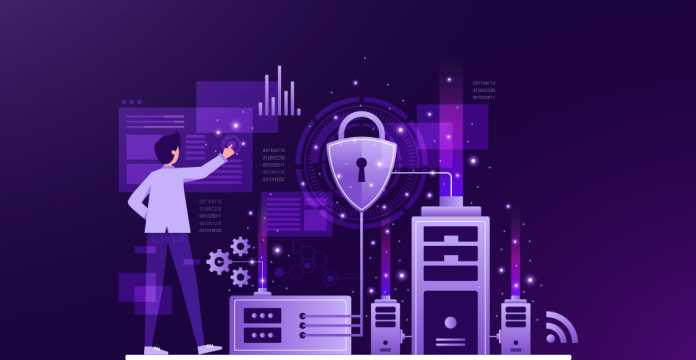
Technology is an ever-evolving sphere. While consumers and businesses benefit from automation to make everyday tasks more comfortable, the flipside is that it has become easier than ever to find threats within these environments. It is highly imperative for every individual to be aware of the latest cybersecurity trends and cybersecurity training.
Cybercrimes will cost businesses $6 trillion USD by 2021. Organizations now conduct a majority of their activities within virtual spaces. As a result, most turmoil caused within corporations happens within the same space. By 2021, a business will fall victim to these threats every 11 seconds. It would be in the best interest of any business to equip themselves with the knowledge to perceive the emerging threats and implement precautionary measures.
Introduction
With the global pandemic forcing most of the workforce to conduct business activities remotely, the digital space spotlight has never been brighter. As a result, cyber crimes have drastically risen, and the threat of a cyber-attack has genuinely never been as imminent.
To maintain fluid and firm business activities, equipping an organization with the latest digital security advancements and trends is just as important as implementing the best technology within corporate processes.
Cybersecurity threats fall into two categories: Internal and external threats.
- Internal Threats – These are security concerns from within the organization, including data misuse and unauthorized access.
- External threats – These are security concerns resulting from external forces such as hacking and identity theft.
Top Cybersecurity Trends
Prioritizing Data Security
Teams within organizations are now spread over large geographical areas. As a result, companies need to invest in securing these lines of transmission to minimize prospective threats. A breach in data transmission could cost companies financially and affect their all-around reputation. Introducing proactive web security applications and heightening existing measures could only help companies combat data loss or misuse.
Cloud Security Measures to Build End User Trust
Cloud computing is becoming more common in organizations. The convenience of remote storage helps free up internal space and offers an added security layer against internal breaches. Cloud computing now incorporates conducting business processes remotely and even hosting remote infrastructure.
Cloud-based service providers will significantly strengthen their security measures to include intelligent Web Application Firewalls (WAF) and secondary security confirmations to offer a more reliable end-user solution.
The Rise of Artificial Intelligence
The introduction of Artificial Intelligence has now expanded to machine learning. While an automated learning system built to perceive and attack new threats through deep learning and other AI frameworks seems like the most efficient and effective mode of security to employ, one must also understand similar frameworks can be employed for the opposition as well.
Hackers can now utilize AI and ML systems to enhance their attacks through network exploration and testing. Cybercrimes will hit a degree of enhanced sophistication as time continues.
Focus on Third-Party Vendor Security
The role of third-party activity has become increasingly crucial in enabling the success of corporate processes. As a result, security concerns need to trickle down to the smaller vendors. The strength of the organization’s security processes is only as strong or aggressive as the protocols implemented on a granular level.
Understanding The Growing Risk From Mobile, BYOD, and IoT Devices
Mobile Devices, Bring Your Own Devices, and the Internet of Things cut down long-term operating costs for organizations that aren’t looking to make large infrastructural investments. This, in turn, elevates flexibility and productivity among employees and removes geographical barriers to productivity.
The flow of sensitive business and customer data over these devices increases security risks, and as a result, organizations need to focus on managing the vulnerabilities of their management style and creating solid reliable endpoint security.
The Rising Threat of Large-Scale Cyber-Attacks
International scale cyberattacks, including DDoS and Zero-Day attacks, spread propaganda, procure state and industrial secrets, and encourage digital warfare to only increase going forward. As a result, Governments and larger-scale organizations need to undertake more advanced security measures to ensure rising threats could still be neutralized.
Automation and Integration in Cybersecurity
The reliance of manpower on digital security has been progressively phased out. The implementation of more cognizant security systems allows a more agile and proactive approach to maintaining higher security levels. It eradicates the need for retraining professionals. Instead, it allows the organization to approach security threats with a strong elimination approach towards recurring/basic threats and an innovative approach towards lesser-known threats.
Phishing and Ransomware
Phishing and Ransomware attacks rely on stealth to harness data. As a result, they tend to play a permanent role in the tools used by cyber attackers. These attacks can easily be adjusted to fit with the continual development of the digital environment. More “sophisticated” methods are now used to extort data, identities, and payments, further distribute malware and steal cryptocurrency.
Educating the organization on what these threats look like and in-depth training with all stakeholders on how to effectively protect themselves could help organizations avoid large-scale attacks through a seemingly harmless attempt to gather data.
Final Thoughts
Cybersecurity should be a top priority for any organization. Introducing firm yet flexible security solutions to protect identity and business data is ideal in a time of quickly developing technologies that play for both sides. Equipping the business with the information to detect prospective problems and implementing strong security measures allows for a strong wall of defense against ever-evolving threats.
So, these are the latest cybersecurity trends that you should be aware of. The digital age of information has introduced easier ways to automate and innovate. Businesses, in particular, are able to harness this to improve business activities and performance. On the other hand, cybercriminals are able to build new and innovative ways to initiate corporate destruction. Equipping yourself with the knowledge and expertise when it comes to threats could be what saves an organization from suffering major losses.
If you want to learn about various cybersecurity trends, methods, and how to adopt them, you should consider pursuing an IT Governance Certification Courses from Invensis Learning. Some of the popular IT Security and Governance certification courses that individuals and enterprise teams can take up are:














